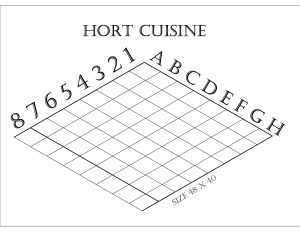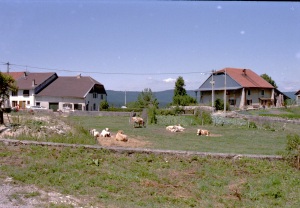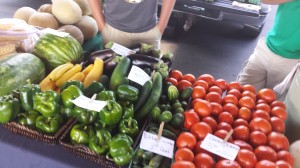How much do we really know about soil?
“We know more about the movement of celestial bodies than about the soil underfoot.” – Leonardo Da Vinci
Living a healthy lifestyle can mean many things, regular sleep, exercise, reduced stress, enjoying work, balanced eating, learning something new everyday, exploring new sights, meeting friends & relatives or a gentle stroll around a park.
Almost all involve going outside at some stage, or even spending time outside. Like this walk across the Jura Mountains in France.
When we were kids we used to dig in the ‘dirt’ , now it turns out this passed beneficial microbes to us. Plenty of microbes on the Farm.
Today we hear of parks and recreations departments that are banning pesticides and herbicides from play areas, and sports fields – 40 years ago we were more concerned with flint stones breaking the surface of the grass and ‘skinning’ kids knees when they played sports.
Field hockey needed a very even playing surface of grass to be played well, so it was often heavily compacted and over fed to keep the grass green & growing !
Research shows time and again how beneficial taking a walk in a woodland is, or sitting under a tree, or making a garden or landscape.
Yet most of us, move from one hermetically sealed air conditioned room, to our hermetically sealed air conditioned car,
to our hermetically sealed air conditioned office – is it any wonder we are losing a connection with nature?
Those folks lucky enough to live outside cities and away from the urban sprawl , are indeed fortunate.
They can leave windows open at night, refreshing the air inside, removing stale contaminated air, rarely using air conditioning.
We figured a hedge around the house and a tree canopy above was more than enough to reduce the inside temperature 20 degrees or more. It creates its own microclimate between the hedge & the house.while also providing a fair degree of privacy.
The planning process hasn’t helped much either with 140ft set backs, single story developments , individual car parking areas for each business and strip malls, that encourage you to ‘hop’ in the car to go from store to store.
Then same style sub divisions, with all vegetation ‘stripped’ , the topsoil structure almost non-existent at the construction stage, then hardly any landscaping to create interest, shade, or harmony with surrounding areas.
In fact it wouldn’t be too far to say that the effect is boring !
I wonder how many years it takes before this picture changes?
All this contributes to built in obsolescence within 25 years, the developments have very little diversity of style and worse a total lack of walking from home to the stores, – one of the healthiest pursuits for us all.
One of the major advantages of living in towns or cities is this easy connection with homes, stores, work places and amenities.
We all tend to be creatures of habit, so this routine is a hard one to alter
There are signs of a healthier approach.
Mass transit provides a wealth of benefits, less pollution, easier and quicker commuter travelling, safer travelling, an opportunity to connect with fellow citizens. A more relaxed journey.
Green walls in the urban environment soften an otherwise ‘hard’ landscape, reducing the carbon footprint of the area, making a much more ‘pleasing’ view.
Roof gardens make a more focused impact, they improve the carbon foot print, offer a new habitat and an amenity for the buildings users.
It seems all those ideas, methods and activities from yesteryear were not all that bad for us.
Our connection with nature is again expanding with more and more people exploring the option to grow their own food, or seek out farmers markets.
I suspect for this to become even more popular there will be a need to initially at least simplify the mysteries of growing your own?
The Community Garden or Allotment is a great way to learn the ‘tricks of the trade’ – these are either individual growing areas ‘Allotments’ or the more common these days communal ‘Community Garden’
Of course there is the local ‘Pick your Own’ farms for all those inseason goodies.
From ‘Farm to Table’ might be best said as from ‘Grower to Consumer’ – if this were local, it would have a huge impact on carbon emission reductions ( a lettuce travels 1400 miles to reach your table, not sure how that could ever be described as fresh!).
The more we as professionals make this process easier the greater the likely uptake by households in towns and cities, where new skills will need to be developed.
A really easy start.
A stacked group of herbs, perfect for a compact space.
or much more complex, this lovely exhibition garden shows how to create small garden boxes of produce.
Now all we need is a simple method for the consumer… It will need to have an option which includes a growing medium as many urban yards have very poor soil conditions.
This system can be found at www.picagardi.com
Using a unique patented layout grid. enabling almost anyone to place plants in the correct positions is an option.
Listen to our up coming internet radio show all about developing gardens at www.grotrends.com we call it ‘Hort Cusine’ !

The very popular and effective Square Foot Gardening Foundation, developed by Mel Bartholomew has been around for many years, with countless books, examples and users.
As has the New Organic Grower & Four Season Harvest to name but a few from Eliot Coleman, an amazing grower in Maine.
It’s time to really try and add herbs & veggies into our urban landscapes.
We as landscape professionals need to promote home grown food more when we plan new landscapes for clients.
Views: 161





















